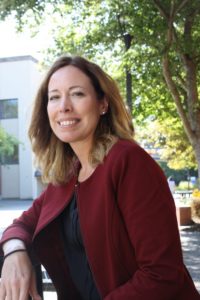Mental health, supporting victims of sexual violence, and post-secondary affordability aren’t just issues on Camosun students’ minds—they’re all areas that new Camosun vice president of student experience Heather Cummings plans on focusing on in her job.
“Those are three hot buttons that I can’t imagine not being responsive to,” she says. “It breaks my heart if a student can’t stay in college because they don’t have the money, and we couldn’t figure out how to get the money; that breaks my heart a little bit because there’s such a social benefit of education.”
Creating the ideal student experience through student retention and making sure students feel like they’re prepared for their future because of their experience at Camosun is key, says Cummings. Student experience also goes hand in hand with academic experience, she says; despite the organizational structure that separates the two, student experience and academic experience “really have to work together,” says Cummings.
“What happens in the classroom translates into what happens in the rest of the institution and vice versa,” says Cummings. “If students aren’t getting supported, not receiving mental health support… They’re working three jobs because they don’t want student loans, or they didn’t qualify, that’s going to impact the learning experience. And our faculty are going to have to be the ones that try and figure that out. I think we’ve got to create that common language between the areas where we’re talking about the same things and we have the same goals.”

Cummings started at Camosun on August 19, taking over from Joan Yates. She says that many of the solutions to problems students may face are already on campus, but sometimes it’s a matter of finding them.
“It’s just a matter of talking to people and figuring out where support needs to be to get those solutions in place,” she says.
As far as the position influencing students in day-to-day life, Cummings says that it’s hard to identify specifics because student experience changes on a student-to-student basis. Cummings says that Camosun has an extremely diverse student population and that she wants to focus on what each individual needs.
“It’s a matter of having a flexible learning environment where every student sees themselves in the halls and the walls and knows that this is their place and that there’s something there to help them,” she says.
But part of the reality Cummings is facing is that “we won’t have all the answers, and we won’t have everything,” she says.
“We can help direct students to those community partners that may have the support that we ourselves don’t have,” she says. “I see a lot of attention on community relationships, and getting to know what our students are looking for.”
When it comes to dealing with a diverse student population, Cummings says that it’s key to approach it from a principle of inclusivity so that any student can find the things they need to succeed.
“It shouldn’t be designated services for this population versus designated services for this population,” she says.
Even though there is special attention paid to certain demographics like Indigenous learners and international students, Cummings says, they still have similar needs to other students.
“It’s keeping that principle of inclusivity. I also think we need to be extremely flexible in the way we deliver services, and it’s about the relationship between the staff. My thought is, if the people who are supporting students love what they’re doing, feel like they’re making a contribution, students are going to feel that,” she says. “Happy staff, happy students.”
